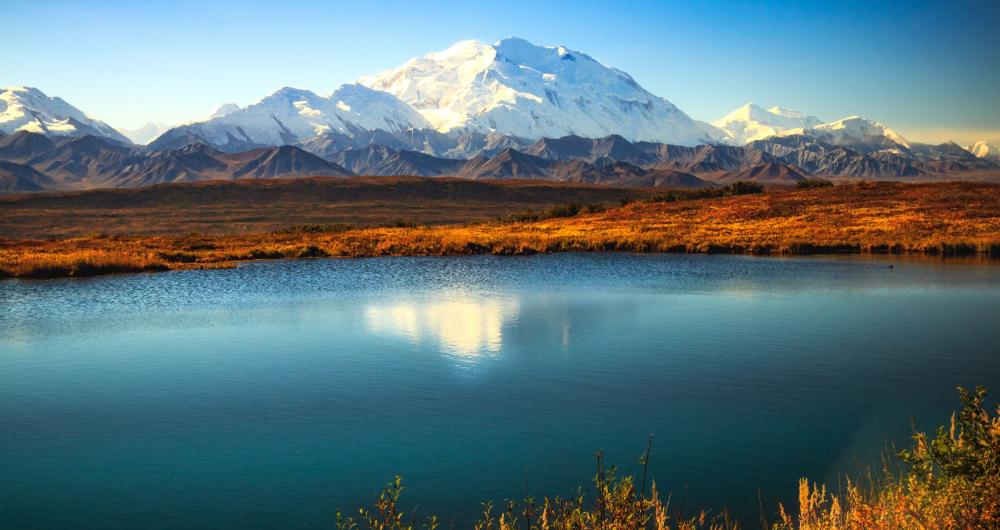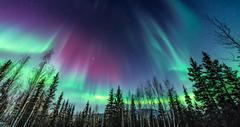Alaskan state and national parks are full of incredible natural beauty. Most of them are the last remaining areas of pristine, untouched wilderness in the country. The land is quite remote from the rest of the country, and it continues to entice adventurers and explorers, daring them to face its challenges. The parks serve the purpose of protecting the incredible beauty of Alaska with its plants and animals as well as to showcase it to the world in all its glory.
Afognak Island State Park
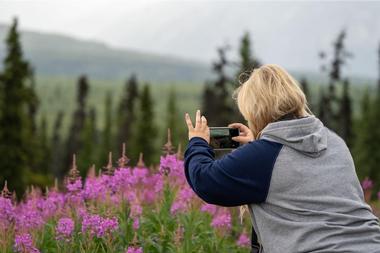
Afognak Island was established as one of the country’s first conservation areas in 1892. Afognak Island State Park today includes over 75,000 acres, which represent a large part of the east and north sides of the island. Most of the park is undeveloped and wild, and only the area south of Seal Bay was logged in the 1990s. The park has scenic, rugged topography that includes a forest of Sitka spruce, and it is also known as a salmon spawning habitat. The park is home to Kodiak brown bears, Roosevelt elk, Sitka black-tailed deer, and the endangered marbled murrelet. Visitors come to hunt, fish, hike, or enjoy the spectacular nature. There are two restored U.S. Forest Service cabins in the park available for public use, and they are located on the south shore of Pillar Lake and at Laura Lake.
Afognak Island State Park, Kodiak Island Borough, Alaska
Alaska Chilkat Bald Eagle Preserve
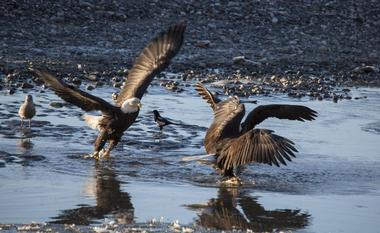
The Alaska Chilkat Bald Eagle Preserve was created to protect the largest concentration of Bald Eagles in the world and their habitat. The preserve also protects natural salmon runs, allowing traditional uses as long as such uses do not damage preserve resources. The preserve includes 48,000 acres of the river bottoms of the Chilkat, Kleheni, and Tsirku Rivers. The boundaries of the preserve include only the habitat areas eagles use at some time during the year. The best area for viewing eagles is along the Haines Highway between miles 18 and 24 because spawned-out salmon and open waters attract the birds in fall and winter. The Chilkat Valley provides permanent home for almost 400 eagles. More than 80 eagle nests have been spotted in the preserve. During the Fall Congregations, more than 3,000 bald eagles have been spotted in the preserve.
Alaska Chilkat Bald Eagle Preserve, Haines Ranger Station, P.O. Box 430, Haines, AK 99827, Phone: 907-766-2292
Baranof Castle Hill State Historic Site

Castle Hill is a 60-foot tall scenic rock on the edge of Sitka Harbor with beautiful views of the city. The hill, now part of the state park and a National Historic Landmark, also serves as the location of the Tlingit and Russian forts. Tlingit natives, who originally lived in this area, built a strategic fortification on the hill, which Russians occupied between 1804-1867. The hill is also the location where Russian Alaska was handed over to the United States in 1867 and where in 1959 the United States flag was flown when Alaska became a state. There is a trail with interpretive panels that runs to the summit. There are also stairs for those who want a bit more exercise.
Baranof Castle Hill State Historic Site, Sitka, AK 99835
Big Delta State Historical Parks
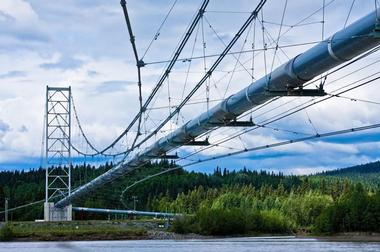
Big Delta State Historic Park, located about eight miles from Delta Junction, is a 10-acre historical park on the Tanana River created to preserve Rika's Roadhouse and Landing. From 1909 to 1947 the area was an important crossroad for miners, travelers, and soldiers on the Valdez-Fairbanks Trail. The main attraction is Rika's Roadhouse, which, with the adjacent outbuildings, has been preserved to tell the story about the time in history and surrounding community. The museum complex today includes the WAMCATS station, a sod-roofed cabin filled with pioneer artifacts, and a Swedish-style barn. Many artifacts, period furniture, and accessories have been donated by local residents. In season, there are guided tours through the complex.
Big Delta State Historical Parks, Milepost 275 Richardson Highway, Delta Junction, AK
Birch Lake State Recreation Site
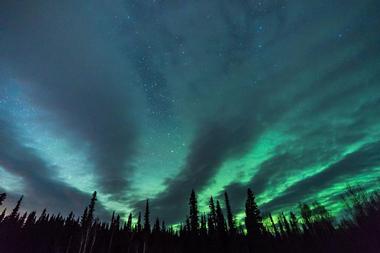
Birch Lake State Recreation Site is located about 60 miles from Fairbanks on the shores of Birch Lake on the Richardson Highway. The 48-acre state park has a boat launch, small campground, and swimming and picnic areas. Next to the park is the Air Force military recreation site. The lake is a popular fishing spot rich with Arctic char, Chinook salmon, Arctic grayling, coho salmon, and rainbow trout. In the winter, it becomes a fun and popular ice fishing spot with fishing huts available for rent. In the summer, the lake is covered in lily pads and surrounded by forested wetlands. There are five camping sites as well as tables, benches, and fireplaces for day use. The boat launch does not allow long term docking. The park has a drinking water well, public bathrooms, and a public use cabin.
Birch Lake State Recreation Site, Birch Lake Pull Off, Salcha, AK 99714, Phone: 907-269-8400
Chilkat State Park

Chilkat State Park is a 9,837-acre park located south of Haines, Alaska near the southern end of Chilkat Peninsula. The park has a beach access, a boat ramp, hiking trails, and spectacular views of glacier-covered peaks. There are magnificent waterfalls, and a narrow bay is home to water birds, seals, and whales. The information centers offers fantastic views of Chilkat Inlet, Rainbow, and Davidson glaciers and has wildlife spotting scopes. There are three trails that run through the mixed forest of evergreens and deciduous trees on the Chilkat Inlet. The seven-mile long Seduction Pint Trail offers an easy hike from the campground, running between the woods and the beach. The boat launch offers easy access to the inlet and, in early June, the run of king salmon.
Chilkat State Park, Haines, AK 99827, Phone: 800-458-3579
Chugach State Park
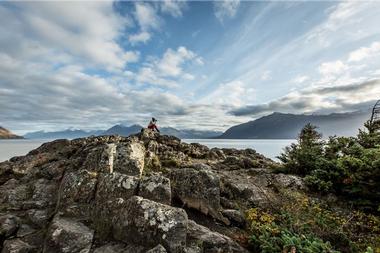
Chugach State Park, located just outside Anchorage, is the fourth-largest state park in the States. More than 200 coastal miles long, it stretches from Anchorage to Canada. Incredibly rich in wildlife, it includes nine unique ecosystems. The park is known for having easy access to all sorts of activities for adventurers and athletes. Visitors in the park have the opportunity to go through hemlock-spruce forests, alpine tundra, muskeg, coastal wetlands the riparian habitat of rivers and lakes, and even marine waters. The park is home to over 45 species of mammals – brown bears, moose, black bears, Dall sheep, one wolf pack, lynx, beavers, fox, river otters, and mountain goats. The Chugach has 16 trailheads and 110 trails covering almost 280 miles. The park is a popular destination for hiking, biking, fishing, hunting, camping, kayaking, glacier-viewing, gold-panning, horseback riding, ATV riding, berry picking, snowmobiling, and much more.
Chugach State Park , Mile 115 Seward Highway, Girdwood, Anchorage, AK 99587
Denali State Park

The 324,240-acre Denali State Park is the fourth largest state park in Alaska. It borders Denali National Park at its southern end, located 147 miles from Anchorage, between the Talkeetna Mountains and the Alaska Range. The park does not have the developed infrastructure of Denali National Park, but it has a number of great campgrounds and offers fantastic hiking, plenty of wildlife, and some of the best views of Denali. The park’s environment ranges from heavily forested areas, streams, and river valleys to the alpine tundra. Denali State Park is home to brown and black bears, moose, marmots, muskrats, beavers, red foxes, and many others. The Susitna and Chulitna Rivers are home to Arctic grayling, Dolly Varden, rainbow trout and five species of Pacific salmon. Denali State Park has excellent vantage points to view both Denali's north summit and south summit, which rises to 20,310 feet. Besides admiring Denali, visitors engage in hiking, fishing, rafting, camping, and wilderness exploration.
Denali State Park, George Parks Highway, Trapper Creek, AK 99683
Denali National Park
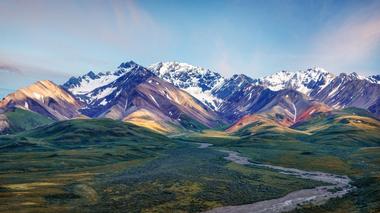
Denali National Park is vast with six million acres of wilderness crossed by one ribbon of road only. Travelers along the road can see the low-elevation taiga forest change to high alpine tundra and snowy mountains, finally ending in North America's tallest mountain peak, 20,310-foot tall Denali. Boasting incredibly scenic views, Denali Park Road is 92 miles long and made mostly of dirt and gravel. In the summer, private vehicles are allowed to drive the first 15 miles of the road up to Savage River. Beyond Savage River visitors have to use the park’s narrated and non-narrated buses. Most of the park’s six million acres are undeveloped, with a number of trails that lead off the park road into the wilderness. There are six campgrounds but no lodge or hotel.
Denali National Park, PO Box 9, Denali Park, AK 99755, Phone: 907-683-9532
Fort Abercrombie State Historical Park
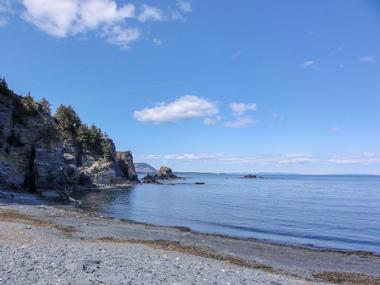
Fort Abercrombie State Historical Park on the eastern shore of Kodiak Island, Alaska includes 182 acres of land at the end of Miller Point. The park was established in 1969 to protect the historical World War II fortifications built in 1941 as well as the magnificent scenery with spruce forests, bluffs overlooking the ocean, and wildflower-covered meadows. The fortifications’ surviving parts include remnants of the building foundation, gun emplacements, and underground magazines. The fortification did not see any action and was abandoned after the war. The park has a campground best for tent camping, a picnic area, a group camping area, and a network of hiking trails.
Fort Abercrombie State Historical Park, Miller Point, Kodiak, AK 99615
If you are interested in Alaskan adventure, watch this unique video about collecting glacier ice.
Glacier Bay National Park and Preserve
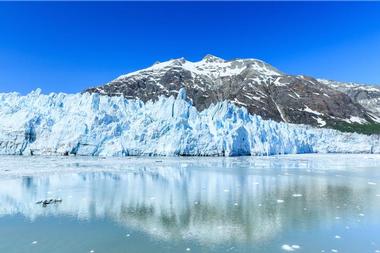
Glacier Bay National Park and Preserve is part of southeast Alaska’s Inside Passage, a coastal route popular with cruise ships and other boats. Located just north of the town of Gustavus, the bay is surrounded by high peaks (Mount Fairweather is the highest peak in southeastern Alaska) and more than 50 glaciers, among them the massive Grand Pacific Glacier. Forest and riverside trails start at Bartlett Cove. There is plenty of wildlife such as humpback whales, puffins, brown and black bears, moose, whales, mountain goats, seals, eagles, and over 200 other species of birds The park is home to a huge variety of plant communities that range from barren land to lush, dense temperate rain forest. More than 400,000 tourists visit the park every year, mostly by cruise ships.
Grindall Island State Marine Park

Grindall Island Marine Park is located in a remote part of Alaska only accessible by plane or boat. The Grindall Island is known for superb salmon and halibut fishing and has two lakes in the middle surrounded by marshlands. Between 1922 and the 1950s a homestead was established and operated as a fox farm. There is a trail that leads from the cabin on the homestead to the lake in the heart of the island. A mooring buoy in the north harbor is used by the visiting boats. Most visitors come to watch whales, hike through the island, and fish for king salmon.
Grindall Island State Marine Park, Kasaan, Prince of Wales Island, AK 99919
Harding Lake State Recreation Area
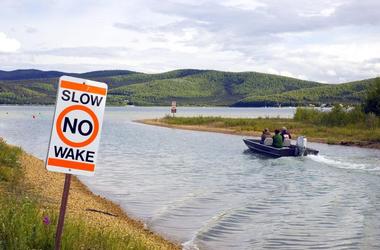
Located about 45 miles south of Fairbanks, Harding Lake State Recreation Area was established in 1967 and is one of the oldest park facilities in the Alaska State Park system. The park has more than 90 campsites with five walk-in group campsites, numerous picnic sites, two picnic shelters and fields for baseball, volleyball, and horseshoes. There is a boat launch for canoes, boats, jet skis, and other watercraft. The boat launch and the center of the lake are connected via a canal. The lake is popular with anglers who are looking for arctic char, lake trout, and burbot. There is a network of hiking trails throughout the park.
Harding Lake State Recreation Area, Salcha, AK 99714
Independence Mine State Park
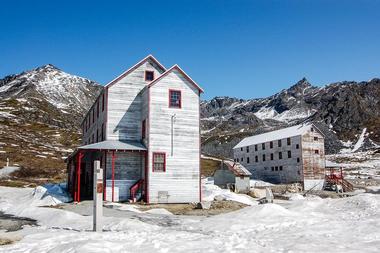
Independence Mine State Historic Park is located across Hatcher Pass from Palmer, Alaska at the site of an abandoned gold mine in the Talkeetna Mountains. The mining in the area started as early as 1897, when the first claims were reported near Fishook Creek. Eventually these early mining attempts formed the Wasilla Mining Company that operated the mines from 1934 to 1943 and again from 1948 to 1950. It was the second-largest Alaskan hard-rock gold mining operation. A large mining camp grew around the operation, consisting of sixteen wood frame houses connected to each other by covered wooden "tunnels." The company closed operations in 1950, leaving behind a great collection of well-preserved mining structures and equipment, which are now a part of a gold-mining museum. There is a self-guided tour through a mine camp.
Independence Mine State Park, 23264 Gold Cord Rd, Palmer, AK 99645, Phone: 907-745-2827
Kachemak Bay Wilderness State Park

Established in 1972, 400,000-acre Kachemak Bay State Wilderness Park was Alaska’s first state park and the state’s only wilderness park. It borders the Kachemak Bay State Park’s southern boundary in the Kenai Mountains. It extends into the Gulf of Alaska and has 79 miles of scenic, rugged coastline, glaciers, mountains, and forests. The park is known for superb backcountry skiing, hunting, fishing, kayaking, hiking, and sightseeing. Kachemak Bay is a critical habitat for many species of marine animals. Visitors can expect to see seals, otters, porpoise, and whales. On land they can observe moose, mountain goats, black bear, coyotes, and wolves. Large numbers of bird species attract avid bird watchers who come to see eagles, gyrfalcons, and puffins. There are no facilities in the park. The park can be accessed by boat from Homer.
Kachemak Bay Wilderness State Park, Homer, AK 99603, Phone: 907-262-5581
Kenai Fjords
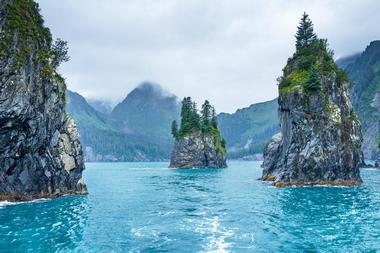
Kenai Fjords National Park is 669,984-acre park near Seward at the edge of the Kenai Peninsula. The park was established in 1980 to protect the area with almost 40 glaciers that flow from the Harding Icefield, the park’s crowning feature. Icy waters and dense forests around the area support rich wildlife. The area is home to Sugpiaq people who rely on these resources to support lifestyle closely connected to the sea. Most of the park is accessible only by water, the fjord ecosystem as well as glaciers. Numerous boat tours provide visitors opportunities to see wildlife and enjoy spectacular scenery. Half-day tours cruise the protected waters of Resurrection Bay. Full-day tours enable visitors to see some of the park’s tidewater glaciers. During the tours, park rangers provide fascinating information about the park. They also present programs at Fox Island.
Kenai Fjords, Seward, Kenai Peninsula, Alaska
Lake Clark National Park and Preserve
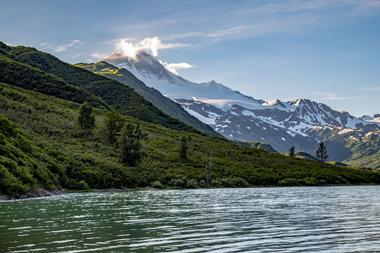
Lake Clark National Park and Preserve is a huge four million acre protected area at the north end of the Alaska Peninsula. The park includes large number of streams and lakes, including Lake Clark, crucial to the Bristol Bay salmon fishery. The park protects many ecosystems, including alpine tundra, rainforests on the coastline of Cook Inlet, glaciers, glacial lakes, rivers and two volcanoes – Mount Redoubt, which is active, and Mount Iliamna. The diversity of ecosystems in the park ensures great conditions for all major Alaskan animals including bears. The park can only be reached by boat or small aircraft, mostly floatplanes. Most popular activities for visitors in the park and preserve are hiking, kayaking, rafting, and camping. Port Alsworth on Lake Clark is the main settled area. Five other settlements in the park are mostly populated by Dena'ina natives.
Lake Clark National Park and Preserve, Port Alsworth, AK 99653, Phone: 907-781-2117
Liberty Falls State Recreation Site

Liberty Falls State Recreational Site is located in the Copper River Valley near Chitina. The site is located next to the beautiful cascading Liberty Falls and Creek just off the road. The Recreational Site is known as one of the most scenic camping spots on the Edgerton Highway. The campground offers a unique combination of privacy and easy road access with a magnificent location in a river canyon by the falls. The site is operated by Taral Enterprises by a private concession contract.
Liberty Falls State Recreation Site, Liberty Falls State Recreation Site Rd, Chitina, AK 99566, Phone: 907-269-8400
Pasagshak State Recreation Site
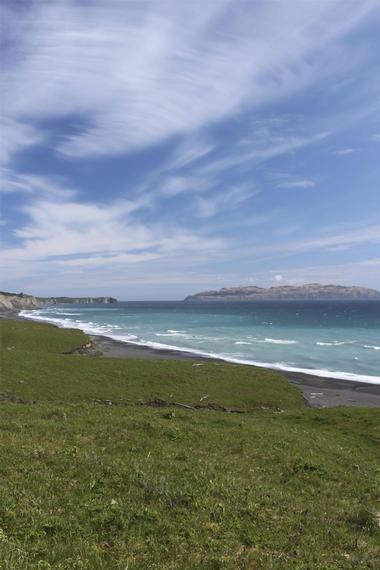
Pasagshak River State Recreation Site is located a short drive from Kodiak and was created in 1980 to provide easy access to the lower part of Pasagshak River for camping, sport fishing, and picnicking. Pasagshak River is one of the most popular sport fishing streams on Kodiak Island. It provides outstanding angling for all five species of salmon. Besides seasonal salmon runs, Pasagshak Bay and area provide home to rich coastal and marine wildlife, including whales, seals, dolphins, brown bear, sea birds, waterfowl, shrimp, and crab. There is an undeveloped campground with three latrines and a hand-pump well for drinking water.
Pasagshak State Recreation Site, 20 Pasagshak Rd, Kodiak, AK 99615, Phone: 907-486-6339
Point Bridget State Park
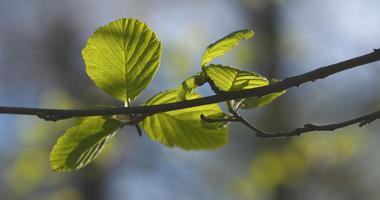
Point Bridget State Park is a 2,850-acre park located about forty miles from Juneau, overlooking Berners Bay and Lynn Canal. The park has a bit of everything, including cliffs, meadows, salmon spawning streams, rocky beaches, and the sea. In the winter, the open forest and meadows are excellent location for skiing and snowshoeing. There is plenty of wildlife, with porcupine and squirrels in the woods, and in the middle of Beaver House Meadow there is a large beaver dam. There are also black bear, sea lions, harbor seals, humpback whales, and many other animals. The park is a popular area for bird watching, beachcombing, wildlife observation, boating, and hiking. Anglers come to the Berners Bay beaches and in Cowee Creek for superb salmon fishing.
Point Bridget State Park, Juneau, AK 99801, Phone: 907-465-4563
Shuyak Island State Park
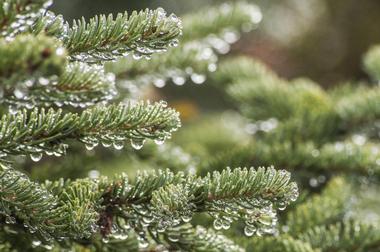
Shuyak Island State Park is a 47,000-acre Alaska park on Shuyak Island in the Kodiak Archipelago. The park consists of a unique forest of Sitka spruce on the coast, beaches, coastline, and waterways. The park has four cabins for visitors and is only accessible by plain or by boat. The island is only 12 miles long and 11 miles wide, but it has more protected interior waterways than any other location in the Kodiak Archipelago. The area is home to a large diversity of seabirds. In the sea, there are otters, whales, sea lions, harbor seals, and Dall porpoises. The dense forests are home to Kodiak brown bear and Sitka black-tailed deer. The park offers a true feel of wilderness, with few amenities.
Kodiak Island, AK
Summit Lake State Recreation Area
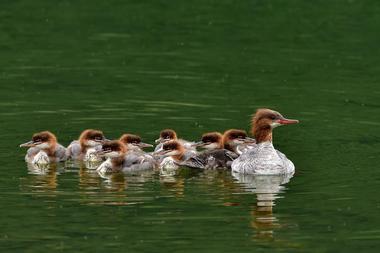
Summit Lake State Recreation Site is a 360-acre park along Hatcher Pass Road near Independence Mine State Historic Park. The area includes beautiful Summit Lake and 3,886-feet-high Hatcher Pass Summit. Summit Lake is a cirque lake, carved by a long-gone alpine glacier. There is a trail that runs around the lake, through magnificent alpine wilderness, leading to a bluff with breathtaking view of the Susitna Valley, the Willow Creek Drainage, and the western arm of the Alaska Range. In the summer, the area attracts a large number of hikers and paragliders. Berry-picking is another popular activity, as well as nature photography. In the winter, Summit Lake is heaven for backcountry skiers, snowboarders and snowshoers.
Summit Lake State Recreation Area, Willow, AK 99654
The Baird Glacier
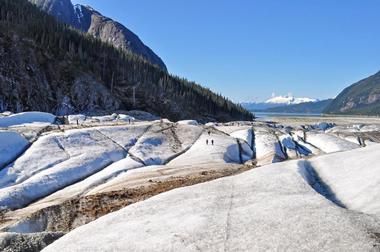
Located about 20 miles from Petersburg, Alaska, the Baird Glacier is terminal moraine and a large glacial outwash plain in front of the ice. It supports a rich diversity of plants and animals. The outwash plain was created over time from sand deposits due to coastal uplift and floods. The moraine is a long mound of boulders, cobblestones, and sand glacier left behind where its terminus rested for many years. There are no facilities for visitors, and there are no cabins or shelters at the glacier. Spurt Cove and Cascade Creek Forestry Service cabins are available not far away in Thomas Bay. There are hiking trails in the area that include Falls Lake and Swan Lake trails. The Baird Glacier is accessible by boat from Petersburg.
123 Scow Bay Loop Road, Petersburg, AK 99833-0309, Phone: 907-772-3841
Totem Bight
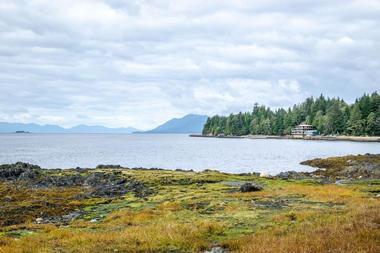
Totem Bight State Historical Park is located north of Ketchikan on the site of the former traditional Native campground called Mud Village. This 33-acre-state park contains a fascinating collection of 14 native totem poles and a copy of a traditional chief's house, a wood-frame structure with a low oval entrance. The entrance leads to a square room with a fire pit, decorated with intricately carved "house posts" with stylized raven symbols that decorate the main facade. The carvings on the replica house were created by Charles Brown, a Saxman Native. The entrance of the park has a beautifully landscaped garden filled with indigenous plants. Two totem poles are placed at the path entrance: an Eagle Grave Marker and a Thunderbird Whale mortuary pole. The park also has a lovely beach and waterfront, which offer great views of the park and its totems. The main park’s path runs through a lush rainforest area full of native trees, berry bushes, devils club, shrubs, and ferns.
Totem Bight, 9883 N Tongass Hwy, Ketchikan, AK 99901
Wood-Tikchik State Park
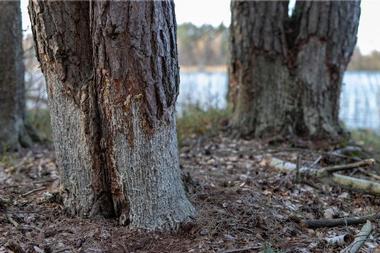
Wood-Tikchik State Park is the biggest and the most remote state park in the country, located north of Dillingham in southwest Alaska. The 1.6 million-acre park was established to protect the area's fish and wildlife, to support native ecosystems, and to secure the continued use of the area for subsistence hunting, fishing and gathering, as well as for recreation. The area is mostly left undeveloped and wild, and there are very few park facilities. The park includes 12 lakes, 60 miles of rivers, more than 5000-foot tall mountains, and extensive lowlands. Wood-Tikchik State Park has a camp and picnic areas on magnificent lakeshore beaches, vast scenic hillside with a network of hiking trails, and plenty of fish in its clear water stream.
Wood-Tikchik State Park, Dillingham, AK 99576, Phone: 907-842-2641


